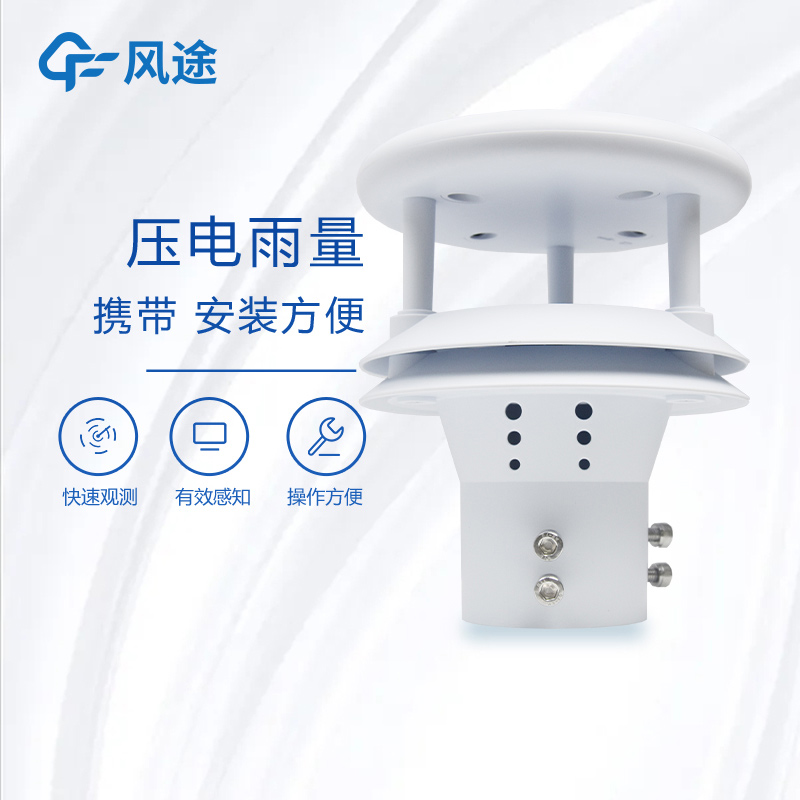Shandong Fengtu IOT Technology Co., Ltd
Sales Manager:Ms. Emily Wang
Cel,Whatsapp,Wechat:+86 15898932201
Email:info@fengtutec.com
Add:No. 155 Optoelectronic Industry Accelerator, Gaoxin District, Weifang, Shandong, China

Sales Manager:Ms. Emily Wang
Cel,Whatsapp,Wechat:+86 15898932201
Email:info@fengtutec.com
Add:No. 155 Optoelectronic Industry Accelerator, Gaoxin District, Weifang, Shandong, China
time:2025-02-14 09:01:33 source:Weather Station viewed:303 time
In fields such as meteorological monitoring, hydrological research, and urban drainage, the accurate acquisition of rainfall data is of great importance. For a long time, tipping - bucket rain gauges have been widely used. However, as time goes by, their drawbacks have become increasingly apparent.
The tipping - bucket rain gauge measures rainfall by relying on rainwater flowing into the tipping bucket. When the tipping bucket reaches a certain weight, it flips and counts. But this seemingly simple principle brings a lot of troubles. In the event of sudden heavy rainfall, due to its own inertia, the tipping bucket reacts sluggishly, often missing the key data in the initial stage of rainfall, resulting in delayed and inaccurate records. Moreover, the manufacturing process differences of the tipping bucket and the wear and tear caused by long - term use seriously affect the measurement accuracy. Especially when measuring light rainfall, it is particularly ineffective, with relatively large data errors.
Not only that, the structure of the tipping - bucket rain gauge is relatively complex. In harsh environments with a lot of dust and debris such as the wild and industrial plants, the tipping bucket is extremely prone to blockage. Once blocked, it cannot measure normally, and maintenance is also rather troublesome.
Don't worry. The FT - Y1 piezoelectric rain gauge can solve these problems for you!
Based on the principle of the piezoelectric effect, when raindrops fall and impact the piezoelectric material, an electrical signal proportional to the rainfall amount is generated instantaneously. This makes its response speed extremely fast, capable of capturing every raindrop in real - time, enabling more timely and accurate data acquisition.
Thanks to electronic technology and high - quality piezoelectric materials, the FT - Y1 has a significantly higher resolution and more stable measurement accuracy. Its integrated design, without vulnerable mechanical moving parts, greatly reduces external environmental interference, truly enabling it to be applicable in multiple scenarios.
Through wireless communication, the collected rainfall data can be transmitted to the monitoring center in real - time, allowing you to remotely monitor anytime and anywhere. The built - in intelligent chip can also conduct preliminary analysis and processing of the data, providing you with more intuitive and practical information.
Choosing the FT - Y1 piezoelectric rain gauge means choosing a more efficient, accurate, and convenient rainfall monitoring solution. Don't be troubled by the disadvantages of traditional tipping - bucket sensors any longer. Upgrade your monitoring equipment now!

In recent years, extreme weather events have occurred frequently. Urban waterlogging caused by heavy rainfall and mountain flood disasters have become important hidden threats to public safety. According to statistics, the average annual economic losses caused by floods globally are as high as tens...
Traditional cup anemometers are widely used in the field of wind power measurement, but they have obvious limitations. It can only measure the synthetic wind speed in the horizontal plane at the installation height of the wind measuring tower, and based on this, it can complete the statistical calcu...
The deployment and use of greenhouse sensors is a very important and critical part of my country's agricultural production at present. Due to the complex and changeable environmental conditions of the greenhouse, it is necessary to select and arrange reasonably according to different needs in th...
After working hard for a whole year, a sudden severe weather may cause all the efforts to "go back to square one overnight". If you want to take preventive measures in advance, the weather forecast is sometimes not accurate enough, leaving people at a loss. Don't worry, our company'...